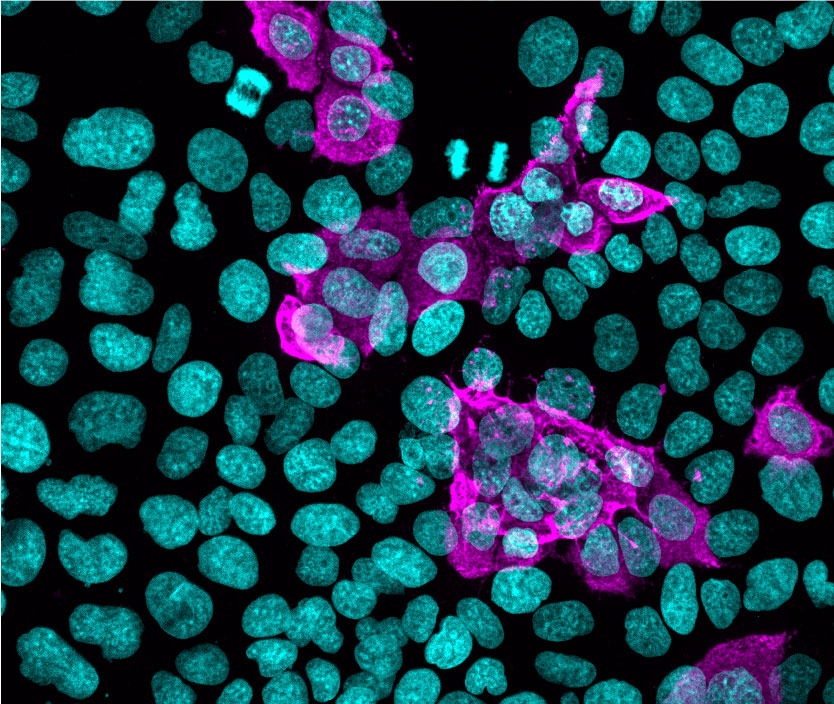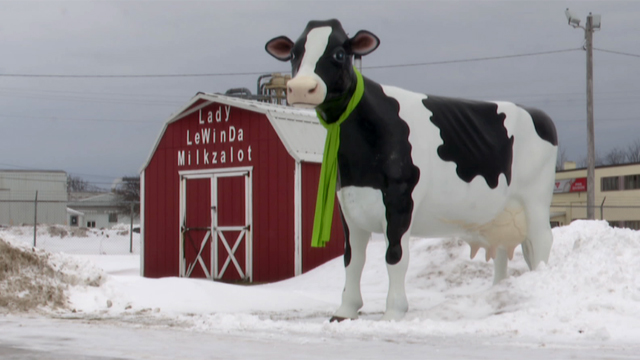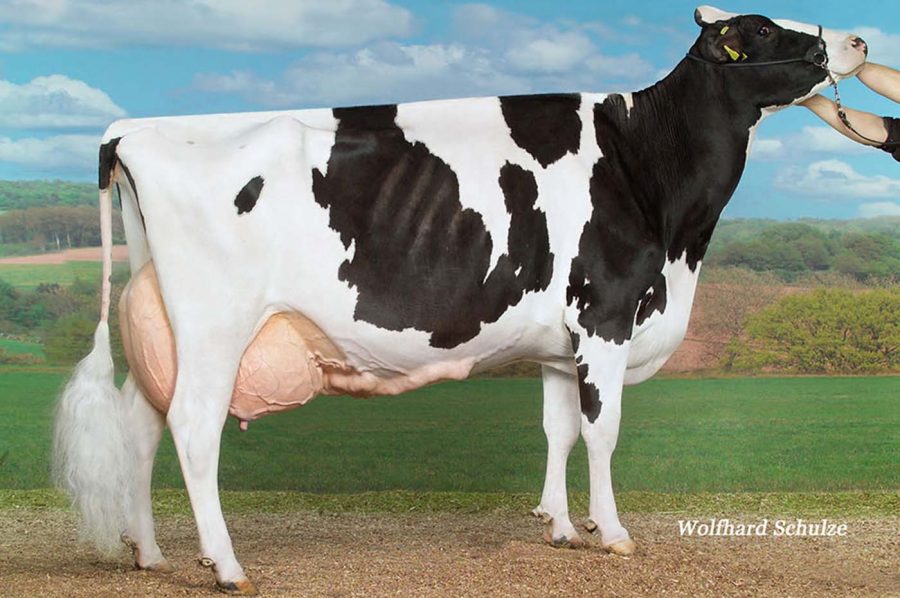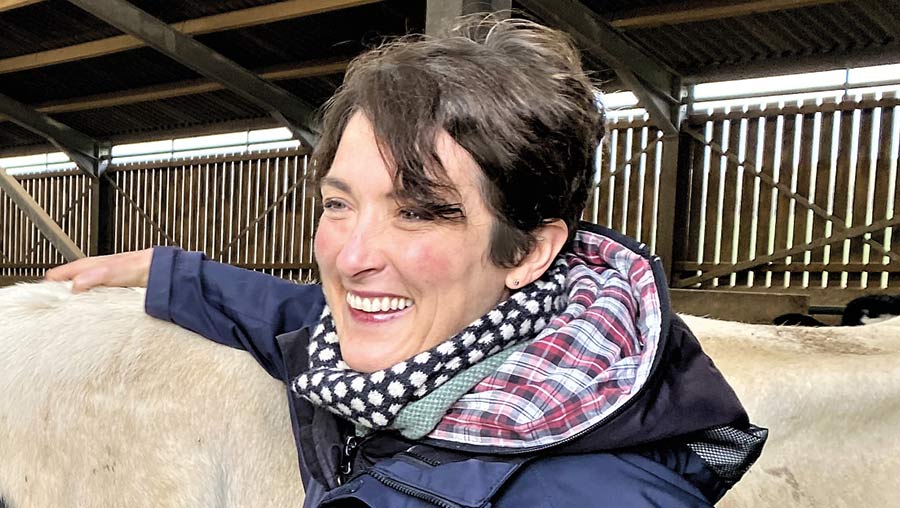Alisha Cooper of Warner Robins, Georgia, had an unusual group of visitors show up outside her new home recently.
It was all caught on video — and the images and story behind it offer a lighter moment for anyone curious about what some sophisticated home security systems can pick up these days (or nights!) when people least expect it.
Holy cow
“I have the Ring chime indoors because my phone is constantly on silent,” said Cooper.
“And at about 3 a.m. one night recently, the chime started going off and woke me up.”
“I’m thinking somebody is trying to break into my house at 3 a.m.”
Cooper, a single mom, said that once she realized what was happening, “I checked my Ring notification and it said there was a person — or something! — at my front door. I wanted to know what I was dealing with.”
So she “opened the live feed in the mobile app to see what was going on,” she said.
Once she did, she said she was “greeted by cows. I was shocked!”
A herd of dairy cows had not only shown up in front of her house, they actually wound up hanging around for a while — and ate bushes, trampled on new plants and, yes, left a few cowpies.
“I’m thinking somebody is trying to break into my house at 3 a.m.” said Cooper about the alarm. But seeing the dairy cows outside “was shockingly awesome,” she said.

A Georgia homeowner was surprised to see some unexpected visitors on her front lawn one night at 3 a.m. (Ring/Alisha Cooper)
She had just “moved into the house three weeks before” the incident, she said. “I got the Ring doorbell from my parents for Christmas.”
After she had it installed, “this was the first thing the doorbell caught on camera.”
And “literally, the first thing I see [on the Ring app] is a cow licking my camera,” she said about her initial check that night.
The herd of cows “ate my plants,” she said. “I’m like, OK, that’s what I get for saying ‘I don’t like these plants,’” said Cooper, laughing.

It’s not every day that a herd of cows makes an appearance at your home, as one Georgia woman who recently moved into a new house discovered. (Ring/Alisha Cooper)
One cow was caught trying to eat the Ring doorbell — but “it [the doorbell] held strong throughout the whole ordeal. The cow eventually gave up — and went off to enjoy a plant instead.”
‘Mooove’ over
The dairy cows that showed up in her new housing community were likely from a location about a mile or two away.
“To get to my house,” said Cooper, “the cows had to trample through some new houses that are in the process of being built. I am in the most recent [group] of houses completed — and there are a few closer down the street that are unoccupied [and] being built. So these cows had a nice leisurely stroll.”
“Literally, the first thing I see [on the Ring app] is a cow licking my camera.”
Cooper said the cows ultimately “ended up wandering back home. And I kid you not, one cow mooed — then the other cows mooed.”
She continued, “After that, they started walking back [to the farm] they came from. They destroyed some fresh landscaping and left some lovely things behind. But, you know, I’d like some grass,” said Cooper, laughing and taking it all in stride.
“It was an experience. If you own a house, definitely invest in some type of camera system,” she said.
The fact that the Ring chime and doorbell system “woke me up to alert me of the commotion outside makes me feel safer.”
She also said she’ll likely “invest in the Ring floodlight” as well. “The cows ended up destroying my side yard, too, and I’m sure the floodlight would have startled them enough to go home.”
Source: foxnews.com








 William Paul Yarosh, 77, of New London, died Friday, February 18, 2022 at The Laurels of New London. Born on September 17, 1944 in Oberlin, he was the son of Marie (nee Remen) and the late Mike Yarosh. William grew up in Penfield and was a 1962 graduate of Keystone High School.
William Paul Yarosh, 77, of New London, died Friday, February 18, 2022 at The Laurels of New London. Born on September 17, 1944 in Oberlin, he was the son of Marie (nee Remen) and the late Mike Yarosh. William grew up in Penfield and was a 1962 graduate of Keystone High School. ANZ sees a positive future for the Australian dairy industry despite competition for land from the beef and sheep sectors.
ANZ sees a positive future for the Australian dairy industry despite competition for land from the beef and sheep sectors. If you’ve ever driven through Lowville, you’ve probably seen her: Lady Lewinda Milkzalot, the champion of Lewis County’s dairy industry.
If you’ve ever driven through Lowville, you’ve probably seen her: Lady Lewinda Milkzalot, the champion of Lewis County’s dairy industry.







 A farm in Albion has discovered harmful forever chemicals in some of their products.
A farm in Albion has discovered harmful forever chemicals in some of their products.





